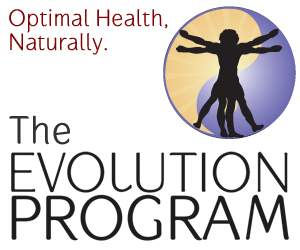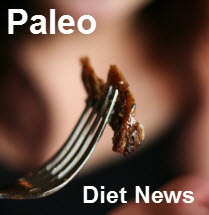The Original Fruits and Vegetables of the Paleo Diet
Wild blueberries. Are they anything like the ones our Paleo ancestors would have eaten? Photo by Bjørn Tennøe. Image courtesy of Wikipedia.org
What sort of fruits and vegetables did our Paleo ancestors really eat? Adherents of the Paleo diet make a fuss about eating plant foods, loading up on lettuce, cabbage, broccoli, peppers and more. But are these foods anything like what was foraged 12,000 years ago or more? What were the original fruits and vegetables of the Paleo diet?
Brian Palmer delves into that question in his article on Slate. He asks: “Did people eat fruits and vegetables in prehistoric times?” This is an interesting question given that Russian scientists have grown a plant from the fruit of an arctic flower that was frozen 32,000 years ago.
Russian scientists claim to have grown a plant from the fruit of an arctic flower that froze 32,000 years ago in the Arctic. That’s about the same time the last Neanderthals roamed the Earth. This particular plant doesn’t produce an edible fruit analogous to an apple or nectarine, but rather a dry capsule that holds its seeds. Did hominids eat fruits and veggies during the Neanderthal era?
They definitely ate
fruit. Last year, paleoanthropologists found bits of date stuck in the teeth of a 40,000-year-old Neanderthal. There’s evidence that several of the fruits we enjoy eating today have been around for millennia in much the same form. For example, archaeologists have uncovered evidence of 780,000-year-old figs at a site in Northern Israel, as well as olives, plums, and pears from the paleolithic era. Researchers have also dug up grapes that appear to be 7 million years old in northeastern Tennessee (although, oddly, the grapes are morphologically more similar to today’s Asian varieties than the modern grapes considered native to North America). Apple trees blanketed Kazakhstan 30,000 years ago, oranges were common in China, and wild berries grew in Europe. None of these fruits were identical to the modern varieties, but they would have been perfectly edible.
Fruit would have been, if not the same, recognizably close to what is grown and consumed today. I would imagine that the botanical varieties of today’s fruit would have been small and tart and much lower in fructose than their grotesque, over grown descendants. But we can still recognize wild blueberries, blackberries and strawberries for what they are.
But what about vegetables. Would we be able to recognize the original broccoli plant, or leaf lettuce? How about the original carrot or pepper?
Vegetables are a different story. Many of the ones we eat today have undergone profound changes at the hands of human farmers. Consider the brassicas: Between 8,000 and 10,000 years ago, humans took a leafy green plant and, by selecting for different characteristics, began to transform it into several different products. Modern kale, cabbage, broccoli, cauliflower, Brussels sprouts, and kohlrabi are all members of the same species, derived from a single prehistoric plant variety. Wild carrots may predate human agriculture, but they’re unpalatable and look nothing like the cultivated variety. The earliest domesticated carrots were probably purple, and the orange carrot emerged in the 17th century. While legumes predate the dawn of man, modern green beans are a human invention.
So vegetables are far removed from their original parents. Our Paleo ancestors did not eat Brussels sprouts, cauliflower or kale. So much for kale chips! And if anyone has ever tried eating wild carrot (also called Queen Anne’s Lace) you also know that the original version is not as tasty as today’s orange carrot. It is quite inedible raw.
The Original fruits and vegetables of the Paleo diet
Researchers are not clear on why fruits changed less than vegetables. But some assumptions can be made. Sugary fruits would have been far more enjoyable to consume as they were than green vegetables. This would mean that the seeds of these tasty fruit would have been disseminated intact. A boon indeed for the plant.
…By the time hominids descended from the African tree canopy, delicious fruits were widely available with no need for artificial selection. Since vegetables gain nothing from being eaten, they didn’t experience the same pressure to evolve delectable roots, stems, and leaves.
Vegetables may gain nothing from being eaten, but humans gain plenty by eating vegetables. The nutrients found in vegetables are essential for good health. But since vegetables don’t taste as good as fruit, humans worked to change them when we became agriculturalists. Vegetables were never the same again!
Even so, fruits did change in the last 10,000 and even more so in the last 100 years. They are generally larger and sweeter than their Paleo parents which means that modern fruit should be eaten in moderation. The over consumption of today’s hyper-sweet, fructose laden fruits could lead to diabetes and tooth loss.
So even though Paleo diet practitioners strive to eat as our ancestors ate, this is really not possible. The fruits and vegetables of the original Paleo diet do not exist any longer or are not recognizable to most of us. Perhaps a wild plant expert could point out the parent of leaf lettuce, but for most of us, it is beyond our ability.
Did you you find the article interesting? Please let us know! Leave your comments and questions below and join in the Paleo Diet News discussion!






Very true, but small correction-wild carrot/Queen Anne’s Lace is quite edible. It is mildly bland and slightly sweet, but oh-so-small at only 1-3 inches long and around a 1/4 inch wide-think of the taste of parsnips. (I used to teach wilderness survival) Wild pea, aka Sweet Pea, is actually toxic (so why did we cultivate it into an edible plant??? Who knows.) Native apples and cherries were tiny and very sour. As for early lettuce? I don’t know for sure, but I do know that basswood trees are completely edible (bark, buds and leaves) and young leaves as they begin to open are sweet like spring leaf-lettuce varities (just in case you’re ever lost in the woods in south or central Ontario….) Of course, many plants that exist today did not exist then. But to get an idea of what we would have eaten, look around you at native plants-it is different for each region and so would early mans diet have been. Food would have changed seasonally, would it not? Or was there only a slow cooling without seasonal fluctuations? Makes me think that early man would have eaten more meat and fat in some seasons and more vegetation during the “growing” season. I am in no way a scientist or expert. I’m just adding ideas….
Thanks for the information! I tried wild carrot several times (it grows wild in my garden) and found it quite inedible. Perhaps I’m harvesting it too late. I am interested in foraging, but have not done much beyond what I can eat from my own front yard (dandelions and wild carrot). I really think that it’s a crucial skill.
I believe you are correct that we would have eaten more meat or more veggies depending upon the season. It just makes sense. You don’t get nice young tender shoots in the middle of winter. This is one reason I believe season eating is important. I think our metabolisms are geared that way.
Thanks for sharing!
Good post! I’ve been studying foraging for some time, and ancestral diets. I started out by trying to forage in our yard, which is mostly undeveloped cedar forest. Anyway, our ancestors ate a HUGE variety of what we would term “vegetables”. The main differences being that the wild versions are often smaller and more pungent, and they ate a huge variety. There were starchy roots, even in northern climates. Like arrowroot, which grows in lakes, and is eaten like a potato. Or sunchokes, which like to go wild. Pawpaws, persimmons, dates … they were and are very sweet.
But greens! The thing that depressed me about the foraging books was that most of what they foraged were greens. Greens are all over, probably in your yard. Dandelions, burdock, chickweed, plantain, purslane, mustard, dill, miner’s lettuce are ones you can often find. It’s hard to say if they’ve been improved by people breeding them or not, but the mustard-type greens are pretty similar in the wild varieties, and all of them survive well in the wild which makes me think they haven’t changed much. Most greens seem to be edible, though there are some toxic ones.
And then there is seaweed. Anyone living near a coast, or even a lake, has access to all the water plants they can eat, and there is only one seaweed I’ve heard of that is toxic. Humans pretty much always lived near water, since it’s pretty hard to carry water around. It’s true that in the US we haven’t eaten it much, but it was eaten in Ireland and Scotland, and still is in much of Asia. Algae is another vegie … I expect humans ate it by default if nothing else, since it tends to be growing in all standing water, and it’s outstandingly high in nutrients. But in ancient Mexico, spirulina was “harvested” by dragging ropes across the water, so algae may well have been an important food source in much of the world.
Wow! I want to be with you, Heather, when the lights go out! Foraging is a hugely important skill, one that I, sadly lack. But I do eat some edibles from my own yard, or at least try. I have wild carrot and dandelions!
Can you recommend any books on foraging?
Thank you so much for sharing!
Fruits evolved to be eaten by animals, because they get their seeds deposited later in a nice warm pile of fertilizer.
Thus, fruits and animals co-evolved for their mutual benefit, and I suspect that our ancient ancestors ate a diet that had lots of what we today would consider non-sweet fruits. Modern fruits today are much too sugary for our health, but non-sweet fruits like tomatoes and bell peppers and avocados seem ideal for us today.
Agreed. Modern fruits are way too sugary. I limit fruits to lower sugar varieties like berries. Tomatoes and peppers are only good if you don’t have a sensitivity to nightshades. But avocados are fantastic! Thanks for visiting!